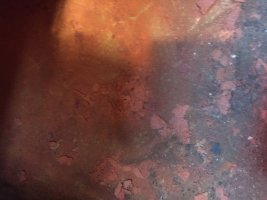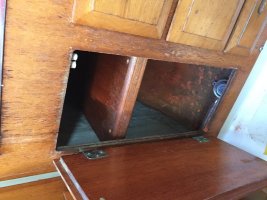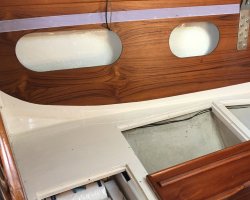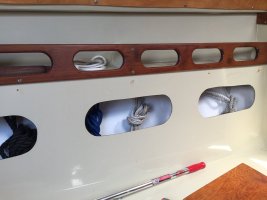lonokai
Member III
While cleaning the boat this morning I attacked the galley… And found what looks like a plastic sheeting and underneath it was this rusty colored powder…(see photos).. I saw a couple of larger pieces which looked a little bit like foam so I'm wondering if this is deteriorated foam that was underneath the plastic sheeting… has anyone run across this before… And do you think it has any impact on the fiberglass?
Attachments
Last edited by a moderator:




